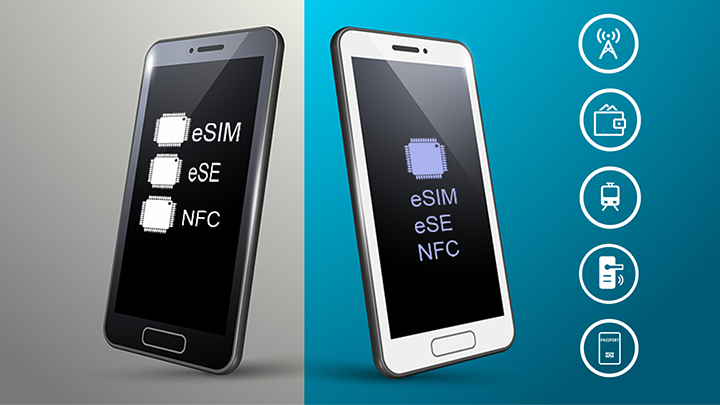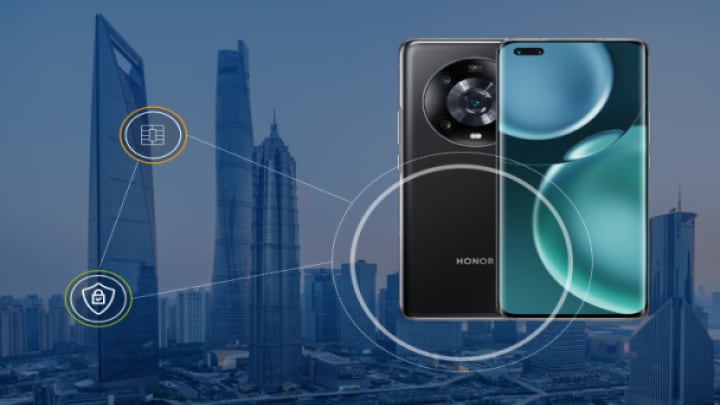Author

Venis Kalderon
Venis Kalderon is a passionate storyteller about NXP's breakthrough technologies, talented team members behind these solutions, and how technology can help enable a more sustainable world.

New technologies, use cases, applications and user experiences are front-and-center focus points for NXP. We are on a a constant search for new ways to apply our expertise and innovate solutions to challenging problems. This was how, in 2018, we saw the opportunity to bring our NFC and embedded secure element (SE) technologies together with the fledgling eSIM or Universal Integrated Circuit Card (UICC). Thus, the race to create the first fully-integrated eSIM was on.
Even before its first certification by GSMA in 2018, the concept of the eSIM was already setting the industry’s imagination alight. It promised the consumer an alternative (or end) to those hard-to-handle pieces of plastic that could be easily dropped or lost. For mobile OEMs, it offered new freedom in design, service and competitive edge. For NXP, it was an opportunity to explore a growing market and build a new business by developing a unique product. So, a team was established to spearhead the company’s efforts, including Cyril Caillaud (now head of eSIM), Abu Ismail (product manager) and later, Frank Oberhokamp.
Smartphone OEMs are faced with a real-estate problem: PCB space is at a premium, and anything that can reduce the amount of space required is going to get attention. Breakthrough technologies in this industry can bring more design freedom for increased functionality, or smaller form factors, or both. Though this is still true today, back in 2018, it was a much more pressing issue. Imagine then, the prospect of a single IC that could deliver NFC, a secure element and an eSIM in one package.

NXP enables Xiaomi Redmi Note 10T with a highly integrated convergence eSIM solution. Explore the increased functionality enabled by the NXP eSIM solution.
“In 2017, NXP saw the opportunity to bring its NFC and embedded secure element (SE) technologies together with the fledgling eSIM, the universal integrated circuit card (UICC). This was the beginning of the race to create the first fully integrated eSIM,” says Cyril Caillaud. At this time, NXP was not yet working directly with telecoms. “So this was an entirely new space for us,” says Cyril.
“At the time, our focus was on developing our mobile wallet, the NFC-enabled contactless convenient payment solution that was steadily gaining traction in the market. How would this play out in parallel with other companies’ eSIM development, and would our mobile wallet be negatively affected? We monitored the market very closely and decided not to wait, choosing instead to develop our own solution, that only we could offer.”
After entering the eSIM market in 2017 with a unique offering and pioneering the “convergence chip” that would set the company apart, today NXP is a full member of the Trusted Connectivity Alliance (TCA) and a GSMA member, with GSMA-accredited production sites.

“In 2022, NXP is tested compliant with more than 200 of the world’s MNOs. When we started in 2019, that number was close to zero. Today, we have a dedicated MNO team who work on the backend to test and validate eSIM profiles. With the NXP GSMA-compliant technology, the world of the SIM card has evolved beyond plastic. Which is great news for the environment too. Around 20,000 tons of plastic is used each year for standard SIMs.”
Abu Ismail, product manager for the SN110 family.

When Frank Oberhokamp joined the team in the beginning of 2020 as eUICC product manager, he was impressed with what NXP brought to the table: "NXP was offering a chip that used less space and less power with an ecosystem that also included the operating system. With aligned hardware and software, NXP was able to offer the highest grade of end-to-end security—a unique offer from a single supplier—and it got the attention of the mobile OEMs," explains Frank. With a growing team of engineers, the NXP portfolio of convergence eSIMs expanded.
NXP enables the first HONOR flagship smartphone. Learn more about the benefits of convergence eSIM in our blog about the first HONOR flagship smartphone.
In addition to cellular connectivity, the NXP's SN110U, SN220N and their successors enable applications including secure mobile transit, payment and smart access. It offers 400 kb of device memory and every profile that is loaded onto the UICC takes around 50 kb. This provides plenty of space for multiple mobile network operator (MNO) profiles, with remote SIM provisioning and over-the-air updates.

The race to make the first convergence chip may be over, but new challenges to innovate arrive every day. “We are interviewing,” says Cyril, "We're looking for new people and ideas for the eSIM team. When I ask the candidates why they want to move—to work with NXP—they remind me of our own accomplishments. They tell me 'in less than four years, NXP has grown from not being in telecom to grabbing Tier 1 OEMs. For that to happen it must be a fast-paced environment with a positive spirit. That’s what I want to be part of.'"
Join NXP’s eSIM Team. Explore career opportunities and visit our job listings page.
Tags: Consumer, Technologies, We Are NXP

Marketing Communications Manager, NXP Semiconductors
Venis Kalderon is a passionate storyteller about NXP's breakthrough technologies, talented team members behind these solutions, and how technology can help enable a more sustainable world.

October 14, 2021

April 8, 2022

July 28, 2020